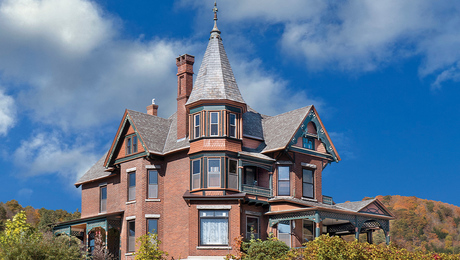Crown molding interior 45 degree cut
I’m putting up a crown molding on top of new kitchen cabinets I just installed. I bought a book published by Stanley called “Complete Trimwork & Carpentry”. I believed the title but when I tried to get the miter setting and bevel setting for my compound miter saw for a 45 degre interior cut it doesn’t have it. It has a chart going from 67 degrees to 179 degrees. I have a 45 degree spring angle and need the figures for miter and bevel to make the cut.
Thanks for the help in advance.
Dennis















Replies
is it too big to cut upside down and reversed ?
With a compound miter saw, you don't have to put it upside down and reversed if you have the correct miter setting and bevel setting.
"With a compound miter saw, you don't have to put it upside down and reversed if you have the correct miter setting and bevel setting"Right but its easier, faster and more accurate to cut it against the fence. Unless you have a VERY large crown that won't fit that way, do it against the fence.
If it fits on the saw I find it faster and easier, and easier to make small adjustments to the cuts.
Make sure the spring angle is really 45°. That's very unusual for crown molding.
But if it really is 45°, you don't need a miter and bevel setting. Just set either one at 45° (for a 90° corner) or 22.5° (for a 45° corner), depending on wether you lay the crown flat or cut it standing up.
The chart covers 67 degrees to 179 degrees because it's referring to the angle of the corner which is typically around 90 degrees.
And be aware that what you miter saw calls 0 degrees is actually 90 degrees.
I used the chart settings for both an inside 90 and outside 90 and they worked out. I'm now at the coner cabinet and that has two 45s. Thanks for your response. If that doesn't work, I think I might try dividing the 90 degree settings in half and see if they work.
I tried both and neither works. There has to be an easy formula just as all the other angles.
Tahnks again
Edited 1/17/2008 11:34 am ET by Panda4812
Sorry. I misled you. I've always cut crown molding with it sitting on the miter saw at correct spring angle. That means that I only ever have to worry about the miter and not the bevel.
Cutting as you are, on the flat, you will need to set both. Check out this website: http://www.josephfusco.org/Articles/Crown_Moulding/crownscript.html
Bookmarking again.
Thanks for the reminder.
http://www.dewalt.com/us/articles/article.asp?Site=woodworking&ID=2
If its true 45 degree crown, the angles are 35.26/30 for cutting the piece on the flat and fitting a 90 degree corner. The link to the dewalt tables and instructions are posted above.
You get out of life what you put into it......minus taxes.
Marv
Edit: Since I dont cut crown very often, I have cut samles of all inside, outside and scarf joints out of small pieces of stock. I label them RH inside 90, LH outside 90, etc. It helps emensly when trying to figure out the cut.
Edited 1/17/2008 4:12 pm by Marv
Thanks for the site. I used it and solved my problem. My first problem was thinking it was a 45 degree angle, after more thought I came to the conclusion it was 135 degree angle. Big difference. I put the numbers in and got the angle and bevel I needed.
Thanks again,
Dennis
Glad to hear it. Thanks for the update.
I must be in the minority here, but I'd cope an inside miter, regardless of the angle.
http://grantlogan.net/
Even a 45 degree inside miter for cabinet crown?
I would cope it too but you still have to cut the angle to see the profile that needs to be coped.
You get out of life what you put into it......minus taxes.
Marv
Edited 1/17/2008 5:16 pm by Marv
but you still have to cut the angle to see the profile that needs to be coped.
Yeah, I know I didn't answer the question 'cause I don't know off the top of my head. But I could figure it out in about 10 mins if I had the saw set up. http://grantlogan.net/
"Because I really want to live in a country where the poor people are fat. "- Unidentified Indian Immigrant when asked why he wants to come to America
I'm assuming that by an "inside" 45 degree angle you mean the cabinets transition an inside 90 degree corner by having the corner cabinet at 45 degrees with respect to the cabinets on either side. This actually creates an inside angle of 135 degrees.
For a 135 degree angle the compound cut angles would be 16.32 and 15.69, for 45 degree spring angle crown.
For what it's worth I cut almost all crown on the flat. I question that cutting it upside down against the fence is necessarily more accurate, a slight alteration in the spring angle while cutting is quite possible, whereas, when she's a flat - she's a flat.
As for coping, for that inside angle thats a lot of material to take of the back, and if the angle is accurate on solid cabs I'd probably cut them to fit.
Let's not confuse the issue with facts!